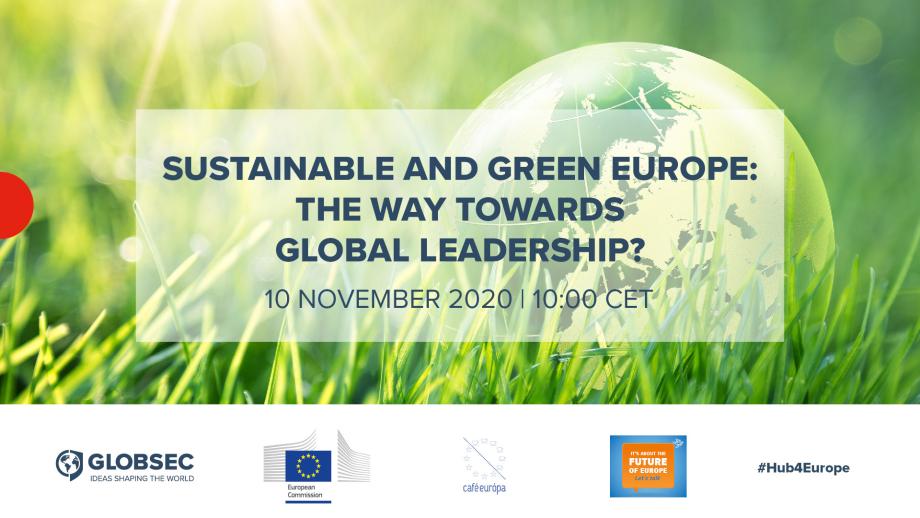Reflections on Sustainable and Green Europe: The Way Towards Global Leadership?

These are some of the reflections and conclusions expressed by the speakers during the joint GLOBSEC and Representation of the EC in Slovakia online webinar Sustainable and Green Europe: The Way Towards Global Leadership? that took place on 10 November 2020.
The EU is a global leader in climate change and environmental policies but it cannot do it alone. Even if it achieves its ambitious green targets it only emits about 8% of the world’s greenhouse gases. However, the EU can help effectively shape global standards. As its market is among the largest and richest in the world, it can set sustainable and green rules, in such a way that those who want to enter the single market will have to follow them. This is practical and strong leverage that the EU holds and should use. In addition, with the results from the US elections, the EU is re-gaining a strong ally in the new US administration. The EU can and should be proud of its global leadership on climate and environmental policies.
Yet, instead of concentrating too much on the global conversation and working on even newer targets, the EU should work internally on the agreed commitments and implement policies, investments, and innovation.
The COVID-19 pandemic is not stopping the process but rather speeding-up twin green and digital transition. We should not be concentrating on the question IF green transformation happens but HOW it happens because the transition to a low-carbon, climate-resilient and resource-efficient economy is already unstoppable. Now is the time for implementation, then the EU economy will be cheaper and more competitive globally.
EU’s next steps – the main takeaways
- The EU needs to translate the process into European policies because the implementation is the key.
- There needs to be a change in the paradigm of the European economy towards a green economy. With this also comes the necessity to change the measurement of green and sustainable economic growth. Using the GDP as a measurement in an old fashioned way will become rather obsolete.
- The transition needs to move away from the political sphere to more practical solutions as it concerns the economy and the consumers. These are important categories. If CEE governments resist the jump into green transition, eventually the European economic competition will push these countries into negative economic consequences, and eventually, the consumers will not fancy buying nongreen CEE products.
- It is important to use the National Recovery and Resilience Plans toward green transition (e.g., up to 35% of all planned actions in Slovakia are targeting green investments)
- For many CEE countries, like Slovakia, Poland and Bulgaria, the green transition will be costly compared to other member-states. Thus, a sensible mechanism for transition needs to be agreed upon by the EU and the national governments.
- These are the sectors on which the EU needs to concentrate on for a successful achievement of the ambitious green targets and for future economic growth:
- Energy: renewable energy (carbon and smart grids technology), energy efficiency
- Buildings renovation (40% of the total European energy consumption comes from heating/cooling buildings): creating jobs, contributing to a circular economy
- Transport: clean innovation, battery technology, charging stations
- Agriculture and forestry practices: In the EU it continues to be a significant problem. While we do so much in transport, energy and buildings, old model practices are implemented in agriculture and forestry. There is a strong need for proper management.